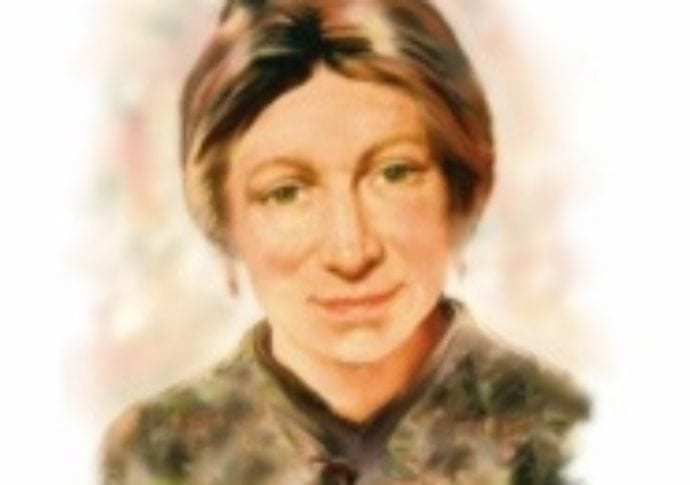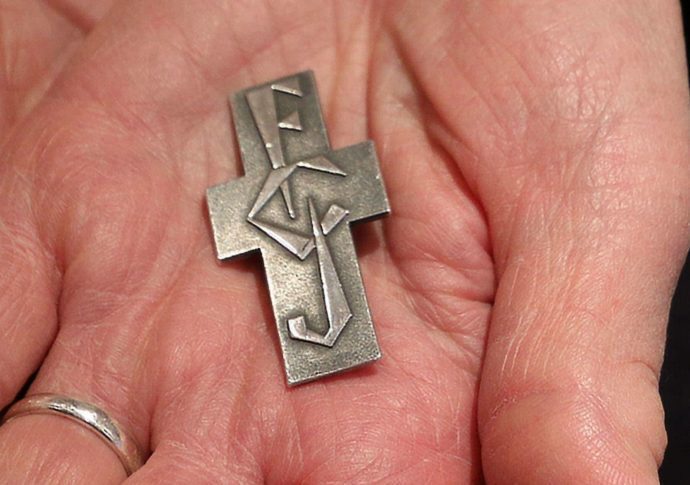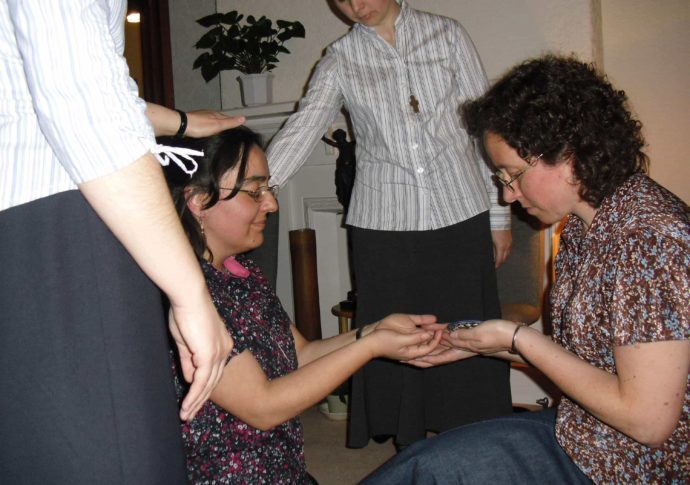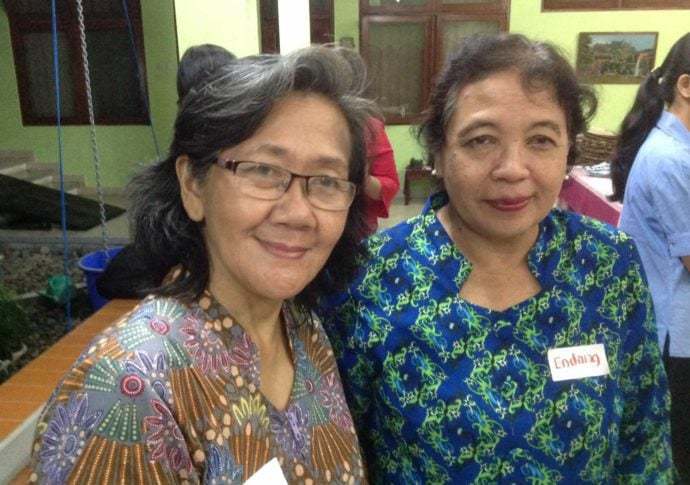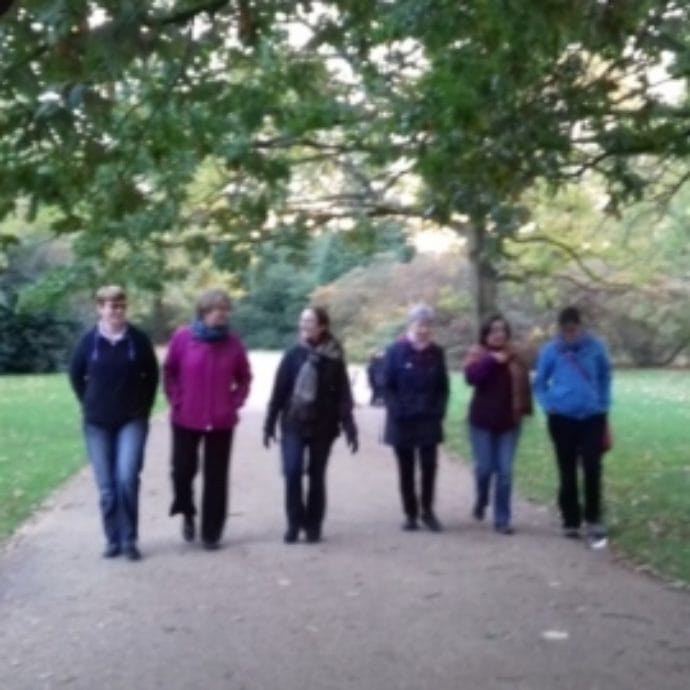A reflection by Teresa White, fcJ first appeared in Thinking Faith, a Jesuit online journal, where she celebrates Pope Francis’ message in his Apostolic Letter Desiderio desideravi: ‘Through our liturgical actions, words and gestures, the love which unites us as God’s people is experienced on this day and in this time.’
The beautiful title of Pope Francis’ Apostolic Letter on the Liturgical Formation of the People of God, Desiderio desideravi, is not easily rendered in English, but perhaps ‘I have longed with all my heart’ captures something of the tender intensity of the words. Spoken by Jesus to his friends as together they shared a last meal before his death on the cross (Luke 22:15), the words have meaning not just for those disciples then, but also for all of us who hear them today, and for Christians in every age. Week after week, when we go to church and join other parishioners in prayer and worship, every time we go to Mass, ‘we are drawn there by [Jesus’s] desire for us’ (Desiderio desideravi §6). Love, Pope Francis tells us, is the essence of the liturgy, and his entire letter encourages us to ‘surrender’ to the love of Christ by participating as fully as possible in the prayers and actions of the communal celebrations of God’s people.
When someone who loves us tells us that he or she is ‘longing’ to meet us, to spend time with us, and invites us to a family celebration, we would indeed be ‘dull of soul’ not to respond with warmth and gratitude. Echoing a line from the ninth century hymn, Ubi caritas, Francis says that it is the love of Christ that gathers us together – ‘Congregavit nos in unum Christi amor’ – and there is something endearingly fresh about his insight that the liturgy is ‘the concrete way that [Jesus] loves us’ (§11). Since the liturgy, the place where we encounter the living Christ, is an essential dimension of the Christian life, ‘the Sunday Eucharist, the foundation of communion, is at the centre of the life of the community.’ (§37)
In the broad sense, when we speak of the liturgy we mean the rites, ceremonies, sacraments and public prayers of the people of God. A liturgical service, therefore, is not for the most part the place for private prayers and personal devotions: ‘The action of the celebration does not belong to the individual but to the Christ-Church, to the totality of the faithful united in Christ. The liturgy does not say “I” but “we”… it takes us by the hand, together, as an assembly, to lead us deep within the mystery that the Word and the sacramental signs reveal to us.’ (§19) Communal and deeply symbolic, the liturgy opens the way to grace, reminds us that grace is at work in the community of believers; it nourishes the soul, invites us to ‘taste and see how gracious the Lord is’.
The beautiful title…, Desiderio desideravi, is not easily rendered in English, but perhaps ‘I have longed with all my heart’ captures something of the tender intensity of the words.
Throughout history, humans have acknowledged the unseen presence of the divine in their lives by using visible, audible and tangible signs and symbols. In this way, they created a sacramental ‘language’, in which material realities – water, oil, bread, wine – are invested with spiritual meaning. These ordinary things put us in touch with certain inward elements of the physical life that the outward aspect hints at or suggests. Francis is keenly aware that this symbolic language, which is at the heart of the liturgy, ‘is almost inaccessible to the modern mentality’ (§44). Today, when individualism and subjectivism are so much part of our lives, many of us have lost the capacity to comprehend and respond to this sacramental language of the believing community. So, if our Eucharistic celebrations are to be meaningful and alive, he says, we need to find ways to deepen our appreciation of the symbolic words and actions that play such a vital part in our communal worship – otherwise, our celebrations will be largely meaningless. Symbols are both powerful and fragile, and if they are not respected, they lose their force and become insignificant. For this reason, Francis poses the question: ‘How can we become once again capable of symbols? How can we again know how to read them and be able to live them?’ (§45) If we do not address this problem, he implies, our liturgies will be increasingly impoverished.
Towards the end of the letter, Francis draws attention to gestures and words which ‘belong to the assembly’, and he briefly explains their significance. When, for example, during the Mass, ‘everyone does together the same gesture, and everyone speaks together in one voice’, the energy of the entire assembly is transmitted to each individual (§51). Hence the liturgical gestures in our celebration of the Eucharist – often, but not always, accompanied by words – have a symbolic force: the gathered community expresses our desire to be united in body, heart and spirit as together we acknowledge the saving work of Jesus in our lives. At certain moments in the Mass, we kneel to ask pardon, or we bow in adoration; at other moments, we stand, to praise God, to greet the gospel, to profess our faith, to endorse the petitions made in our name; or we sit, to listen to the public reading of God’s word in scripture, and to the homily, a meditation on the readings we have just heard; we walk in procession, bringing to the altar of God gifts that will become for us the bread of life and the wine of the spirit. In addition, the acts of singing, looking, praying and reflecting, alongside our companions, symbolise our desire to celebrate God’s presence among us.
The symbolic gestures of the Mass are dynamic: they have the potential to transform our lives. If we perform them with sincerity, they can influence our thoughts and words and actions, and even make us resolve to change the way we live and behave. Seen in this light, Francis says that they will not become boring through repetition, for ‘every gesture and every word contains a precise action that is always new, because it always meets a new moment in our own lives.’ (§53) Silence has a place of central importance in this time of communal prayer, for ‘it is a symbol of the presence and action of the Holy Spirit who animates the entire act of celebration.’ (§52) Entering into silence can awaken in us a readiness to hear the Word of God, and to pray; it reflects the intimacy of communion, and can lead to sorrow for sin and the desire for conversion.
Entering into silence can awaken in us a readiness to hear the Word of God, and to pray; it reflects the intimacy of communion, and can lead to sorrow for sin and the desire for conversion.
Francis writes in the aftermath of the Covid-19 lockdowns that may have led some of us to lose sight of the richness and beauty of liturgical celebrations. In this letter, he presents the liturgy as ‘the “today” of salvation history’, and reminds us that ‘from Sunday to Sunday, the energy of the Bread broken sustains us in announcing the Gospel in which the authenticity of our celebration shows itself.’ (§65) Through our liturgical actions, words and gestures, the love which unites us as God’s people is experienced on this day and in this time.
Desiderio desideravi – ‘I have longed with all my heart’. It is Christ’s love that gathers us together, and in the liturgy, our longing to respond to that love can be reawakened.
Sometimes, a hymn or a poem can put into words thoughts and feelings that capture our unspoken desires, and the refrain of one of Bernadette Farrell’s songs does this for me. Although she wrote this song long before the publication of Desiderio desideravi, her words seem to summarise the content of Pope Francis’ beautiful letter:
Jesus, you are the bread we long for.
Jesus, you are the word we need.
Jesus, here in your gathered people today,
You live to show us the way.Bernadette Farrell
This reflection by Teresa White, fcJ first appeared on 17 November 2022 in Thinking Faith a Jesuit online journal. Sr Teresa, a former teacher, spent many years in the ministry of spirituality at Katherine House, an FCJ retreat and conference centre in Salford, UK.
Read more of Sr Teresa’s contributions in our website and in Thinking Faith.
Photo: St. Paul’s Cathedral, Munster, Westphalia, Germany, by tauav, Adobe Stock





